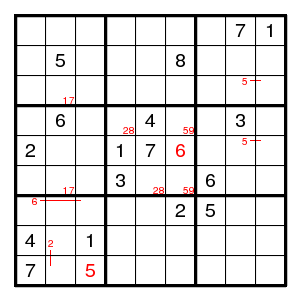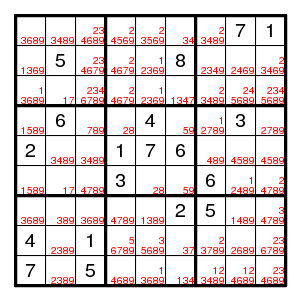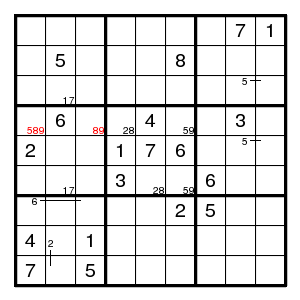



We immediately find two digits, and then also some pairs, and that seems to be about it. Writing all possibilities doesn't really help.


The number of possible digit patterns is very large, except for the digits 1, 5 and 7, thanks to the double pair 17 and the two pairs of 5's we found.
1: 5 patterns 2: 76 patterns 3: 148 patterns 4: 62 patterns 5: 8 patterns 6: 64 patterns 7: 6 patterns 8: 344 patterns 9: 2184 patternsInspecting the possible patterns we see that there cannot be a 1 at (4,1) or (6,8) or (9,7), and no 7 at (4,3) or (6,9).
Why not? Can that be seen immediately? Well, yes, these are cases of Nishio - if one assumes that there is a 1 or a 7 on one of these forbidden places one quickly notices a contradiction.
Given this information, all is easy, the puzzle is completed using singles only.
Terminology The same technique of finding and using the digit patterns was described by Ruud under the name 'templates'.